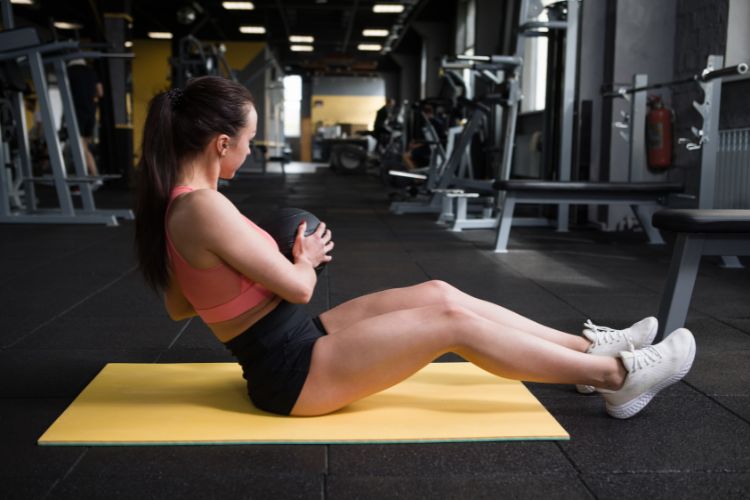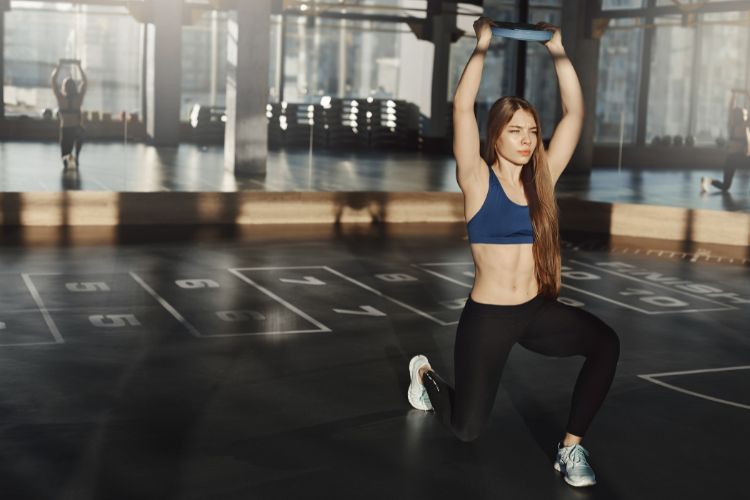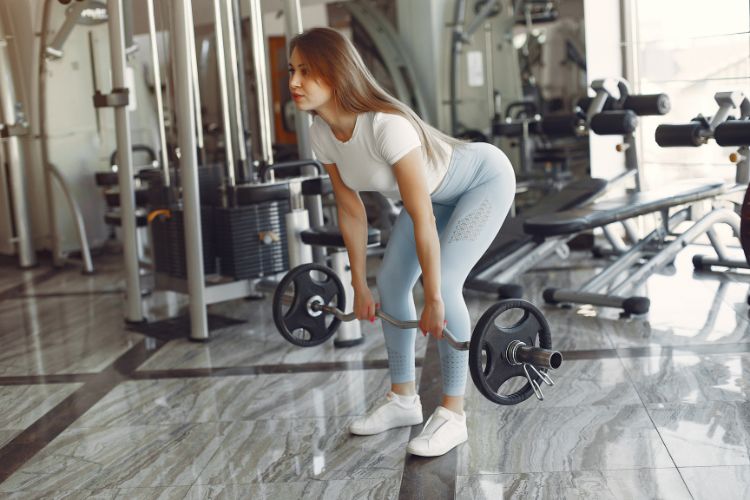Sign up for workout ideas, training advice, reviews of the latest gear and more.






In the world of fitness, intense exercise has gained popularity for its remarkable ability to transform bodies, boost mental health, and enhance overall well-being. Women across the globe are embracing high-intensity workouts as a means to challenge themselves, break through plateaus, and achieve their health and fitness goals. This article take a look into the benefits, types, and tips for incorporating intense exercises into your routine, ensuring you are equipped to unleash your full potential safely and effectively.
Rapid Calorie Burn: High-intensity workouts are known for their efficiency in burning calories. In just a short amount of time, you can achieve the same, if not more, calorie burn than a longer, moderate-intensity workout.
Boosted Metabolism: Engaging in intense exercises enhances your metabolic rate, not just during the workout, but for hours afterward—a phenomenon known as the afterburn effect or excess post-exercise oxygen consumption (EPOC). This results in increased calorie burn even while at rest.
Enhanced Cardiovascular Health: Intense workouts improve cardiovascular endurance and heart health, reducing the risk of heart disease, high blood pressure, and stroke.
Increased Strength and Muscle Tone: High-intensity exercises often involve strength-based movements, leading to increased muscle mass and tone, particularly beneficial for women as they age and naturally lose muscle mass.
Improved Mental Health: Intense workouts have been shown to reduce symptoms of depression and anxiety, thanks to the release of endorphins, the body’s natural mood boosters.
Enhanced Insulin Sensitivity: Regular intense exercise improves insulin sensitivity, reducing the risk of type 2 diabetes.
High-Intensity Interval Training (HIIT): HIIT involves short bursts of intense activity followed by rest or low-intensity periods. Examples include sprinting, burpees, and jump squats.
Weightlifting: Lifting heavy weights challenges your muscles, leading to increased strength and muscle tone.
Circuit Training: This combines cardiovascular and strength exercises, providing a full-body workout that improves endurance and builds muscle.
Plyometrics: Also known as jump training, plyometrics includes exercises like jump lunges and box jumps, enhancing power, speed, and agility.
Kickboxing: This high-energy workout combines martial arts and cardio, helping to relieve stress, improve coordination, and burn calories.
CrossFit: A branded fitness regimen, CrossFit incorporates elements from high-intensity interval training, Olympic weightlifting, plyometrics, powerlifting, gymnastics, and other exercises.
Spinning: High-intensity cycling classes provide a challenging cardiovascular workout, improving endurance and leg strength.
Start Slow: If you are new to intense exercises, start with shorter sessions, gradually increasing intensity and duration.
Warm-Up Properly: A thorough warm-up prepares your body for the demands of intense exercise, reducing the risk of injury.
Focus on Form: Pay attention to your form, particularly when lifting weights or performing complex movements, to prevent injury.
Listen to Your Body: Pay attention to your body’s signals. If you feel pain (not to be confused with the normal discomfort of a challenging workout), stop and rest.
Stay Hydrated: Intense exercises increases sweat production, making it crucial to stay well-hydrated.
Prioritize Recovery: Give your body ample time to recover between intense workout sessions. This includes getting enough sleep, incorporating rest days, and considering activities like yoga or foam rolling.
Consult with Professionals: If you are unsure about how to start, consider hiring a certified personal trainer who can guide you through safe and effective workouts.
Balance Your Routine: Include a mix of different types of exercise in your routine, ensuring you are working all muscle groups and preventing burnout.
Set Realistic Goals: Establish clear, achievable goals to keep you motivated and provide direction in your fitness journey.
Celebrate Your Progress: Take time to celebrate your achievements, no matter how small, recognizing the effort you have put into your intense workouts.
To continue reaping the benefits of intense exercises, it’s crucial to gradually increase the intensity, volume, or resistance in your workouts. This concept is known as progressive overload. By consistently challenging your body, you encourage continual adaptation, leading to increased strength, endurance, and muscle development.
Beyond traditional HIIT, explore other forms of interval training such as Tabata, which involves 20 seconds of maximum effort followed by 10 seconds of rest, repeated for 4 minutes. Another option is Fartlek training, a form of unstructured running where you vary your pace throughout the workout.
Incorporating advanced intense exercises techniques, such as supersets, drop sets, or pyramid sets, into your strength training routine can significantly amplify the intensity of your workouts. These methods not only enhance muscle growth and endurance but also maximize time efficiency.
Stay engaged and motivated by experimenting with the latest fitness trends. From boutique cycling studios to innovative HIIT classes incorporating technology, the world of fitness is continually evolving. Trying out new workouts can also ensure a balanced exercise routine, preventing muscle imbalances and reducing the risk of injury.
Engaging in intense exercise can be challenging, and having a supportive community can make a world of difference. Joining group classes, finding a workout buddy, or participating in online fitness forums can provide encouragement, motivation, and a sense of accountability, helping you to stay on track and push through challenging workouts.
The Importance of Nutrition in High-Intensity Workouts
Engaging in intense exercises requires adequate fuel. Ensure you are consuming a balanced diet rich in carbohydrates, proteins, and healthy fats. Carbohydrates are particularly crucial as they provide the necessary energy for high-intensity workouts.
Pay attention to the timing of your meals and snacks. Consuming a balanced meal 2-3 hours before your workout, followed by a small snack 30 minutes prior, can enhance performance. Post-workout, aim to eat a meal or snack rich in protein and carbohydrates within an hour to optimize recovery.
Intense exercises workouts lead to increased sweat and fluid loss, making hydration paramount. Ensure you are drinking water throughout the day and consuming an electrolyte-rich drink post-workout if needed.
Depending on your individual needs and goals, certain supplements may be beneficial. Options such as branched-chain amino acids (BCAAs), creatine, or beta-alanine can support performance and recovery. However, it’s crucial to consult with a healthcare professional before introducing any new supplements into your routine.
Just as you pay attention to your body during workouts, it’s crucial to listen to your body’s hunger and fullness cues. Ensure you are eating enough to fuel your workouts and support recovery, adjusting your intake based on your activity level.
Balancing Intensity for Long-Term Success
Embracing intense exercise can lead to transformative results, but it’s essential to balance intensity with rest and recovery. Overtraining can lead to burnout, injury, and stalled progress. Pay attention to signs of overtraining, such as persistent fatigue, decreased performance, or increased susceptibility to injuries and illnesses.
By integrating these advanced strategies, prioritizing nutrition, and balancing intensity with rest, you can optimize the benefits of intense exercises, ensuring sustainable and long-term success in your fitness journey. Whether you are lifting weights, engaging in high-energy cardio, or experimenting with new workout trends, the key is consistency, proper form, and listening to your body, paving the way for a healthier, stronger, and more empowered you.
Stay up to date on the latest women’s health, fitness and lifestyle trends and tips.